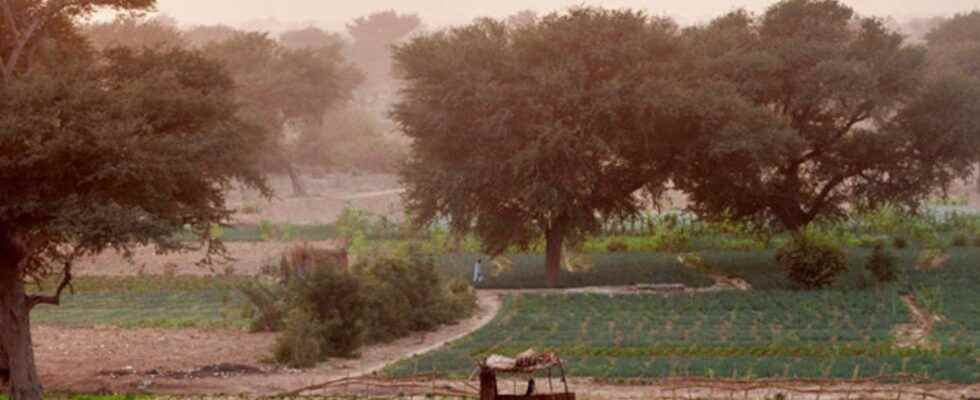The Great Green Wall is an ambitious project in a shaken region. That of planting millions of trees in the Sahel to fight against desertification and its harmful effects on populations. But researchers are recalling today, with supporting simulations, that the impacts of such a geoengineering project could be much deeper. And not always positive.
You will also be interested
[EN VIDÉO] Mini-forests, a solution to global warming? The Japanese Akira Miyawaki invented in the 1970s a method bearing his name to create urban mini-forests. The principle ? Very dense forests of 200 to 3,000 square meters planted with local tree species.
The Great Wall of China. Everyone knows her. But the Great Green Wall. Have you heard of it ? This is how a project launched in 2007 was baptized. The idea: to plant millions oftrees by 2030 in the semi-arid zone of the north of the Sahel, on a strip of Earth 8,000 kilometers long. With the objective of greening the region and restoring land to prevent the Sahara from spreading south. At present, the project is only about 15% complete. But $ 20 billion was recently pledged internationally to push it forward.
Store carbon, restore the biodiversity and bringing socio-economic benefits to the populations of this part of Africa are among the positive side effects expected from this Great Green Wall. But like all the projects of climate geoengineering, it could also have some negative effects, in the region or beyond. Possible negative impacts which have not, for the time being, been sufficiently studied, estimate researchers from the University of Quebec (Canada).
To remedy this, they worked on computer simulations to high resolution. These suggest that the effects of the Great Green Wall on local, regional and global climate may be more profound than those previously considered. So in a context of anthropogenic global warming Strong, the researchers’ work shows a rather welcome reduction of 1.5 ° C in average summer temperatures across much of the Sahel. But regions that are already warmer should become even warmer. With average temperatures increasing by 1.5 ° C.
A disrupted climate on a large scale
Precipitation would also increase sharply. Even to double in certain areas. In question, an intensification and a spreading of the monsoon West African. Let us recall that until then, scientists saw in the orbital cycles of our Earth, the main cause of variation of this monsoon. With the consequence, for example, a few millennia ago, during a period between 11,000 and 5,000 years ago, a Sahara much greener than today. But researchers from the University of Quebec finally show that the vegetation cover of the region also plays a major role.
Their simulations indeed suggest that with more vegetation in the region, a pool of humidity will be created. Because the water cycles will go on increasing. And the precipitation will increase. In addition, the presence of plant tends to obscure the surface – compared to sands from desert – and reduce the amount of dust present in theatmosphere. All this allowing more than heat reach and be absorbed into the surface. Result: a warmer and more humid land compared to the neighboring ocean and therefore, a difference of atmospheric pressure increased and winds stronger and more intense monsoons.
A ‘Great Green Wall’ of trees crossing Africa was once envisioned as a way to fight climate change. But the bold project has stalled, shifting the focus to smaller, community-based projects in a battle to stop the expanding desert.
Story: https://t.co/uYDxVYfK47pic.twitter.com/pUoCuZv1A9– The Associated Press (@AP) November 18, 2021
A stronger West African monsoon could displace some patterns of atmospheric circulation important to the west. And influence for example the El Niño phenomena. Or, to modify the trajectories of cyclones tropical. To get to the bottom of it, researchers will have to work to better understand what led to changes in the Sahara in the past. They will also have to test their simulations on scenarios ofemissions more moderate or even weak. Which, hopefully, should better fit our future …
Interested in what you just read?
.
fs11
